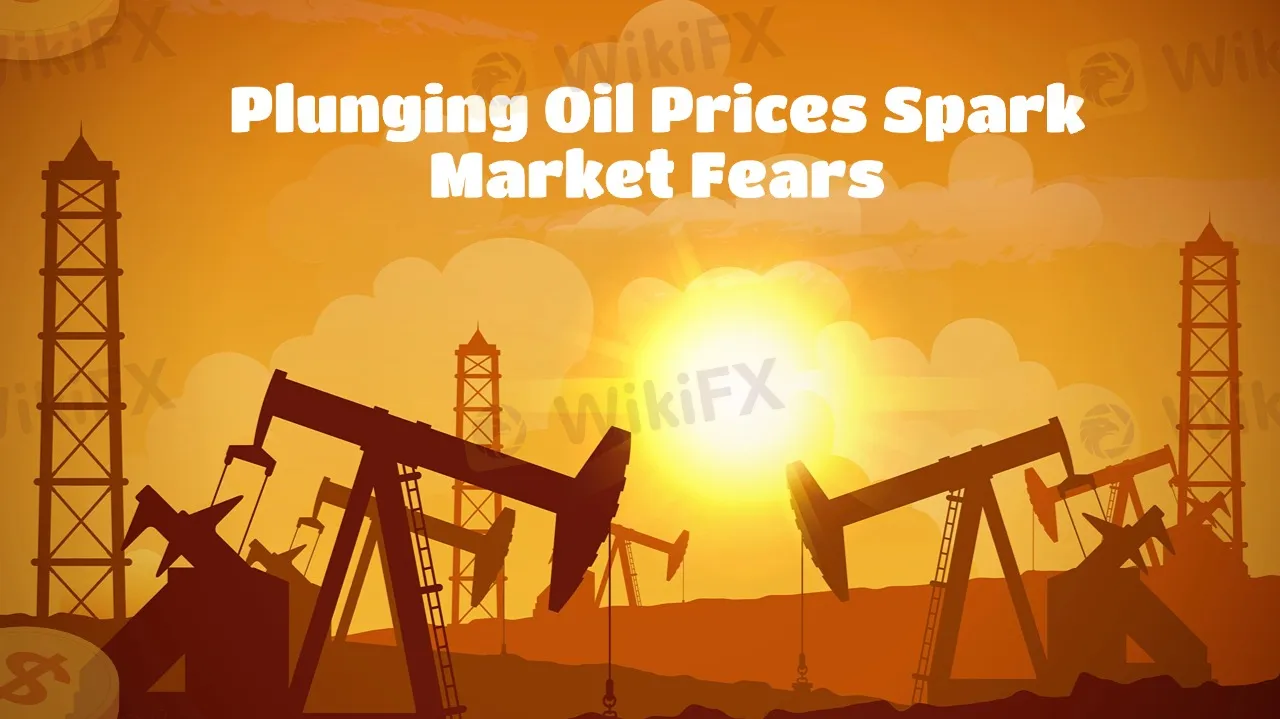简体中文
繁體中文
English
Pусский
日本語
ภาษาไทย
Tiếng Việt
Bahasa Indonesia
Español
हिन्दी
Filippiiniläinen
Français
Deutsch
Português
Türkçe
한국어
العربية
Plunging Oil Prices Spark Market Fears
Abstract:International oil prices have declined for two consecutive days, mainly due to the impact of U.S. tariff hikes, which have intensified market concerns over a global economic slowdown.

OPEC+ plans to increase production starting in April, further adding to market supply pressure and weighing on oil prices.
Recently, U.S. President Donald Trump announced tariff increases on products from Canada, Mexico, and several Asian countries, stating that trade pressure would not be eased. This policy has triggered market panic, prompting investors to reassess the global economic outlook and anticipate a decline in energy demand.
Additionally, investors are worried that the U.S. economy may be entering a “transition period” or even facing a recession, leading to heightened risk aversion and the sell-off of crude oil and other risk assets. Meanwhile, OPEC+s decision to increase production has created additional pressure on the supply side. Although Russia has hinted at possible adjustments, short-term supply growth still poses a challenge to oil prices.
In the short term, oil prices remain under downward pressure, but the market will closely monitor OPEC and IEA‘s monthly reports, U.S. inventory data, and the Federal Reserve’s monetary policy stance. If demand declines more than expected or crude oil inventories continue to rise, prices may fall further.
However, if the Federal Reserve adopts a more dovish stance, market sentiment may recover to some extent. Overall, given the economic slowdown, rising risk aversion, and OPEC+ production increases, the outlook for oil prices remains uncertain.
Disclaimer:
The views in this article only represent the author's personal views, and do not constitute investment advice on this platform. This platform does not guarantee the accuracy, completeness and timeliness of the information in the article, and will not be liable for any loss caused by the use of or reliance on the information in the article.
Read more

Nonfarm Data Lifts Market Sentiment, U.S. Stocks Rebound Strongly
U.S. nonfarm payrolls for May slightly exceeded expectations, stabilizing investor sentiment and easing fears of a hard landing. This upbeat data sent U.S. equities broadly higher, led by tech stocks, with the Dow and S&P 500 posting significant gains. However, behind the optimism lies a fresh round of market debate over the Federal Reserve’s rate path, with uncertainty around inflation and interest rates remaining a key risk ahead.

OctaFX Flagged by Malaysian Authorities
OctaFX has been officially listed on warning lists by both Bank Negara Malaysia (BNM) and the Securities Commission Malaysia (SC). These alerts raise serious concerns about the broker’s status and whether it is legally allowed to operate in Malaysia.

TradingPRO: A Closer Look at Its Licences
In an industry where safety and transparency are essential, the regulatory status of online brokers has never been more important. For traders seeking to protect their capital, ensuring that a platform operates under recognised and stringent oversight can make all the difference. Keep reading to learn more about TradingPRO and its licenses.

Oil Price Breakout Incoming? Investors Should Stay Alert
Oil prices are hovering around a critical level, with potential yet to be fully unleashed. Investors must prepare for sudden changes.
WikiFX Broker
Latest News
SkyLine Guide 2025 Malaysia: 100 Esteemed Judges Successfully Assembled
Vantage Markets Review 2025: Trusted Forex and CFD Trading Since 2009
TradingPRO: A Closer Look at Its Licences
The world could be facing another ‘China shock,’ but it comes with a silver-lining
A Guide to Intraday Forex Trading You Can't Miss Out
CONSOB Blocks Access to 13 Unauthorized Investment Websites
Why STARTRADER Is Popular Among Traders?
New SEBI Regulations on Intraday Trading
Everything You need to know about Barath Trade
OctaFX Flagged by Malaysian Authorities
Currency Calculator


